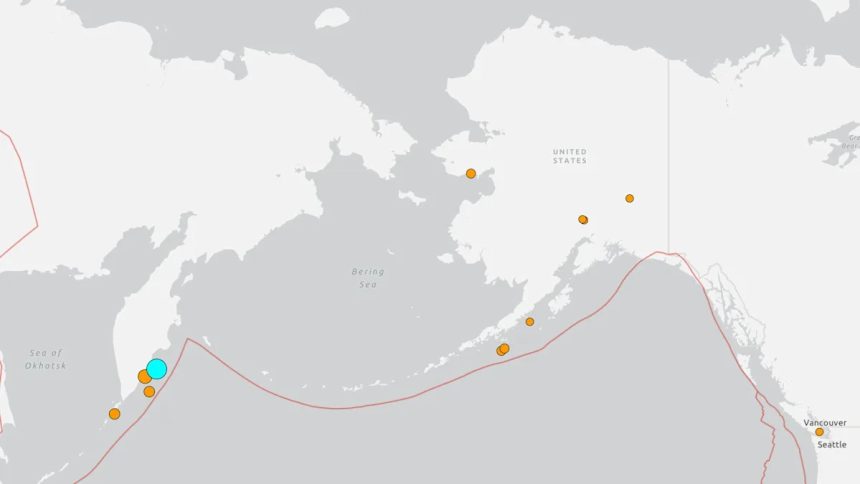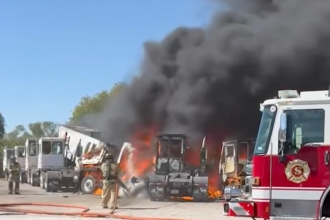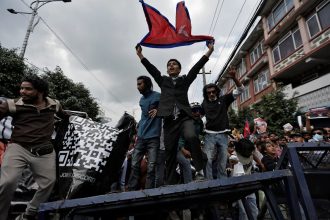A tsunami advisory was issued for the western Aleutian Islands in Alaska after large aftershock hit far eastern Russia on Thursday morning, local time. The tremor was rated 7.8 in magnitude and followed a magnitude 8.8 quake that hit the region in late July. The aftershock struck at 11:58 a.m. Pacific Daylight Time.
The advisory estimated that tsunami waves could reach western Alaska by 12:20 p.m. AKDT. A tsunami advisory means that strong waves and currents are possible.
The threat to other regions of the U.S. is still being evaluated, but if there is a threat to Hawaii, it could arrive by 2:51 p.m. HST.
The initial 8.8 magnitude earthquake on July 29 was the biggest of 2025 and the largest since the 2011 magnitude 9.1 Tohoku earthquake and tsunami. Numerous aftershocks have rattled the region since July.
Thursday’s aftershock is the strongest of the aftershocks, exceeding a magnitude 7.4 aftershock on September 13.
(News from July as it happened: Major Quake Strikes Russia)
The area of the northwestern Pacific is no stranger to tectonic activity. The Kamchatka Peninsula sits on the boundary between the Pacific tectonic plate and the North American Plate. At the aftershock’s location, the Pacific Plate is moving west-northwest relative to the North American Plate at a rate of approximately 80 mm/year, per the USGS.
On Nov. 4, 1952, a magnitude 9 quake in Kamchatka caused damage but no reported deaths despite setting off 30-foot waves in Hawaii. A magnitude 8.4 quake struck the eastern coast of the Kamchatka Peninsula in 1923.
More information will be released by the Pacific Tsunami Warning Center as the situation develops.









